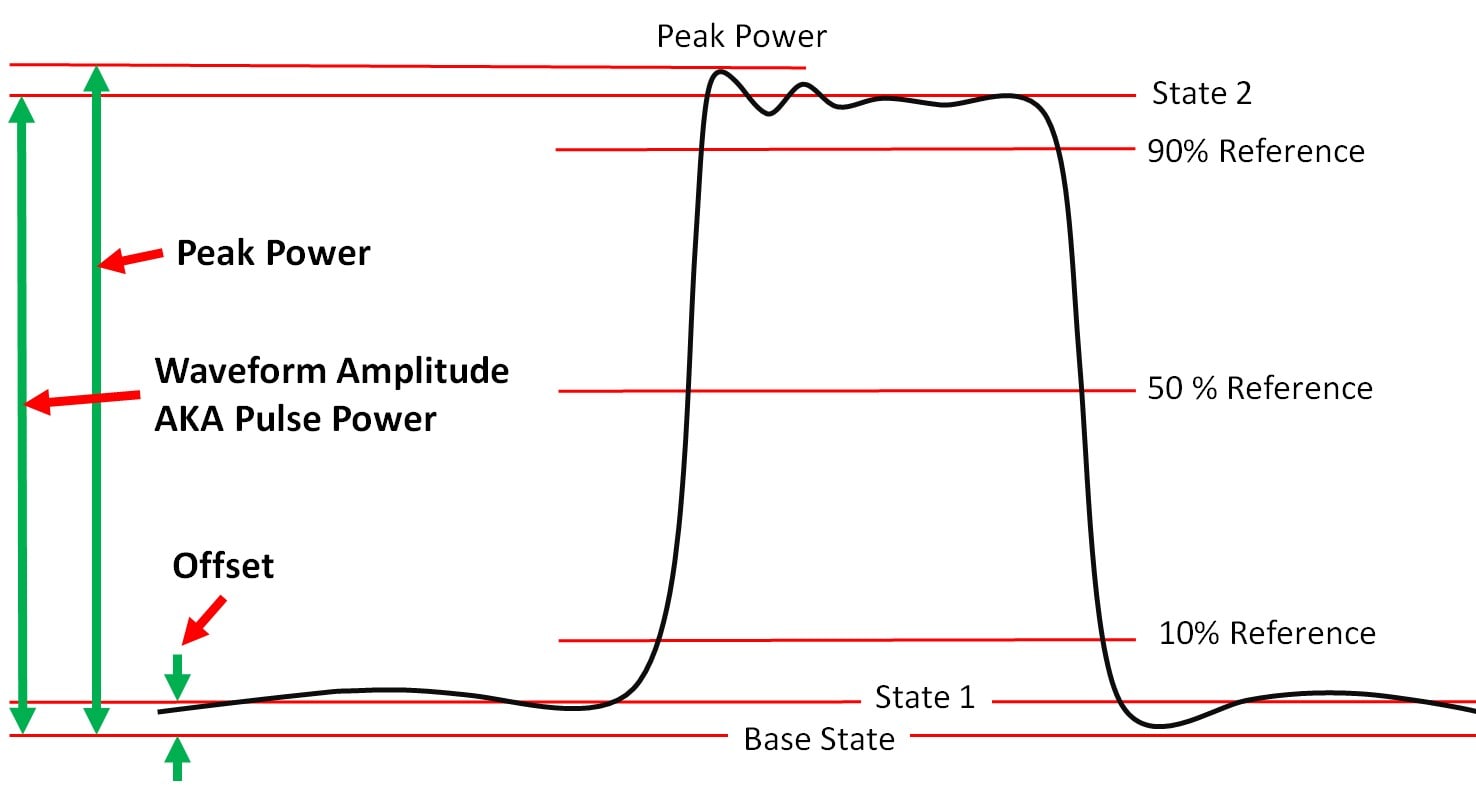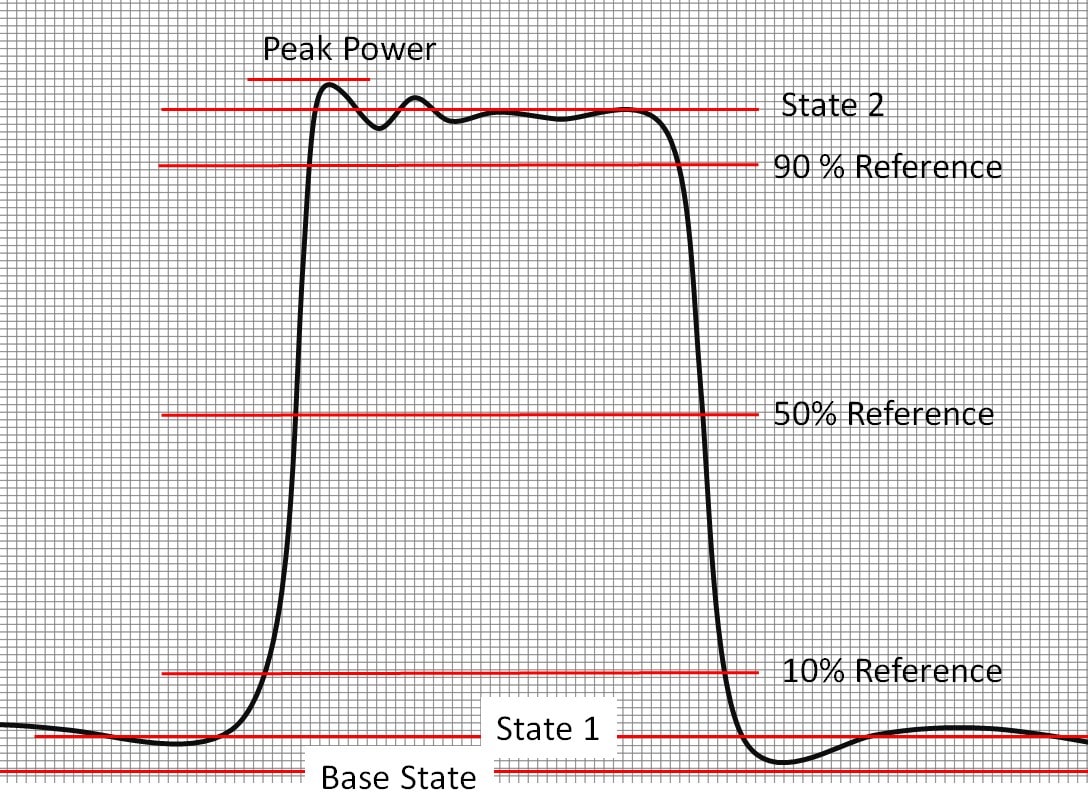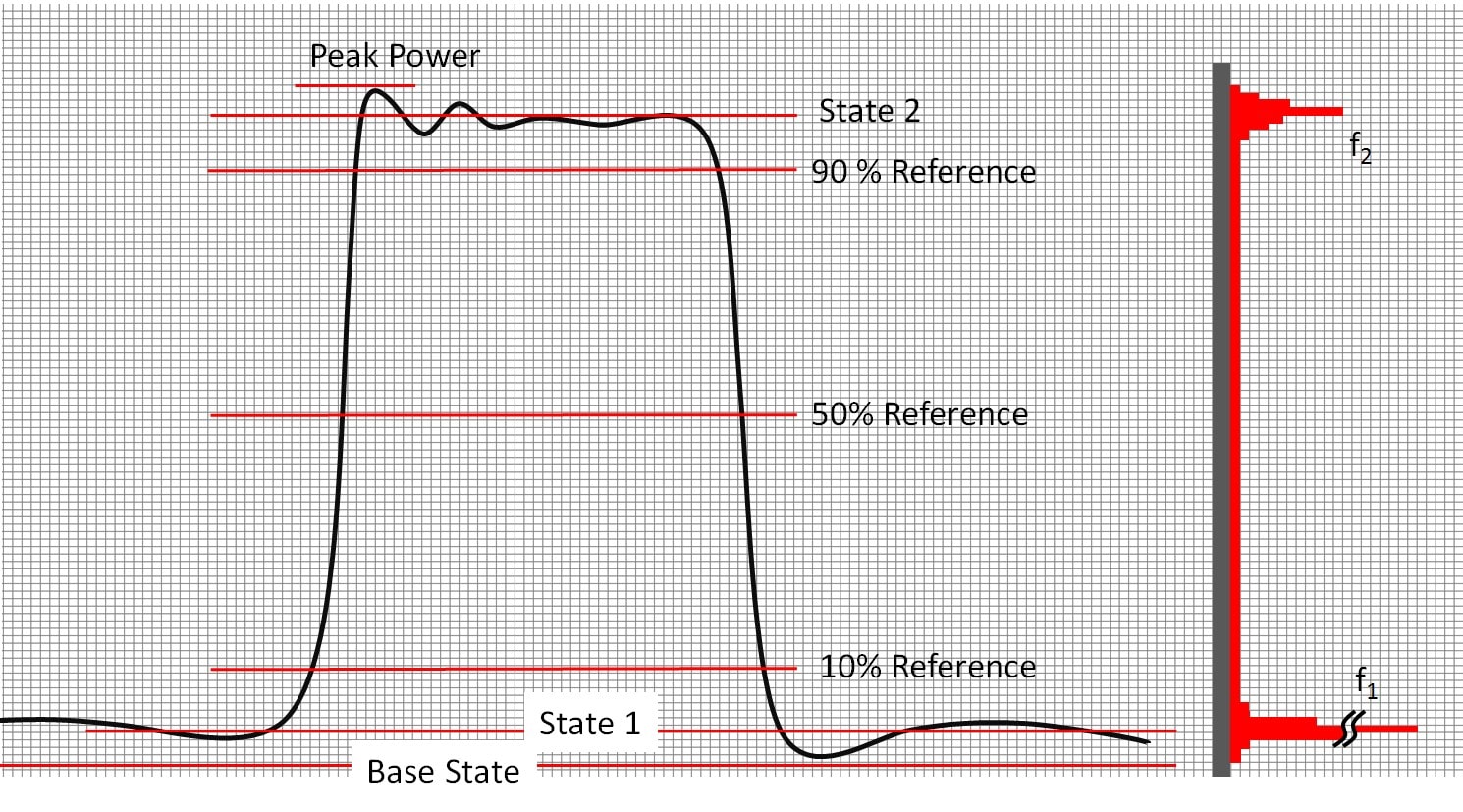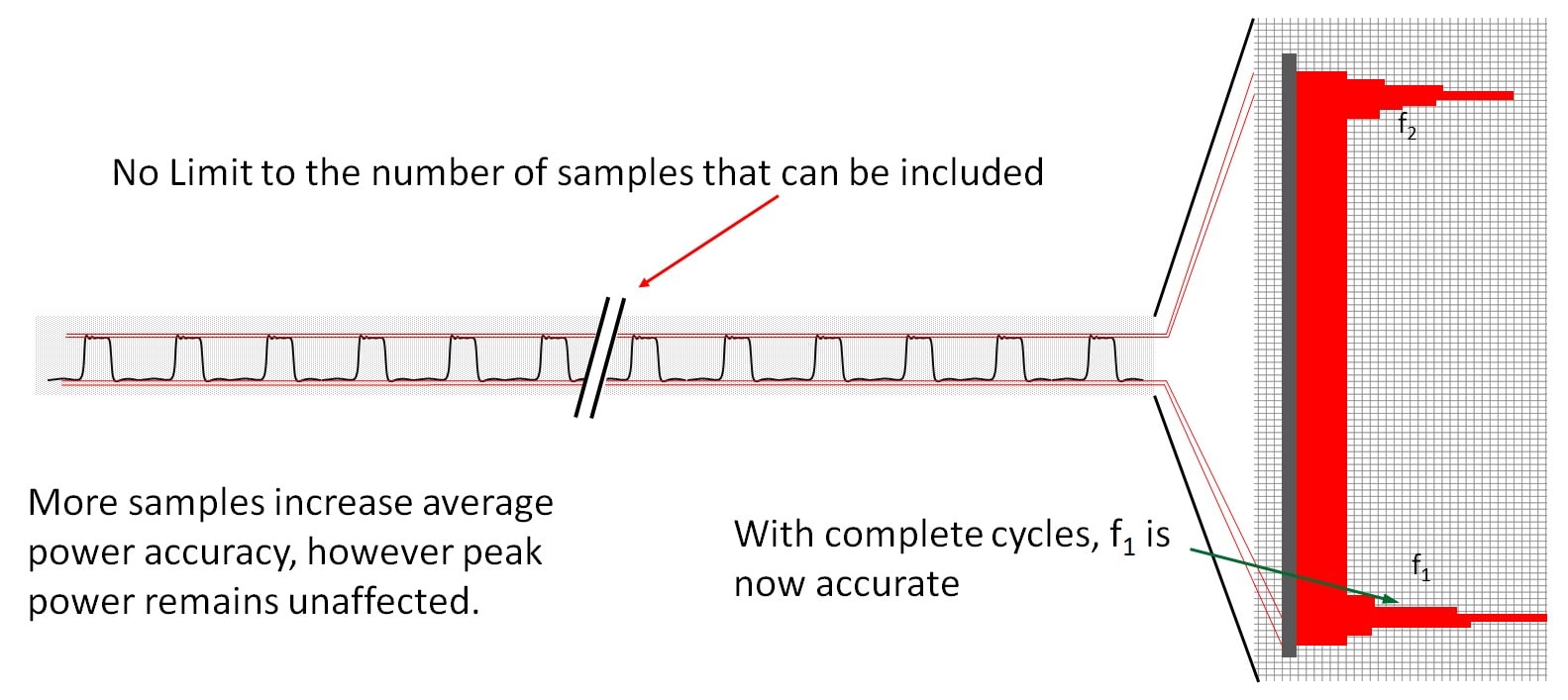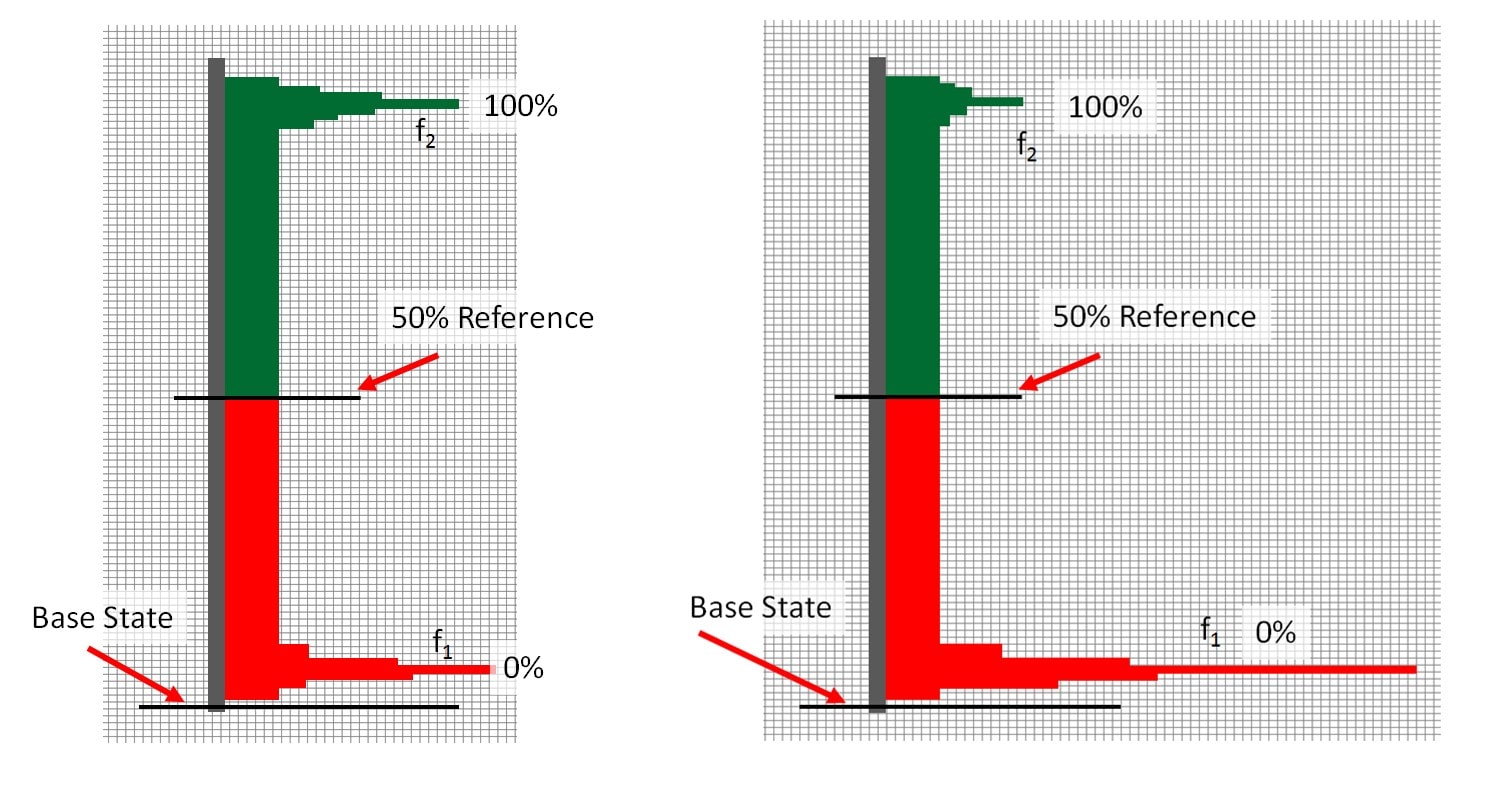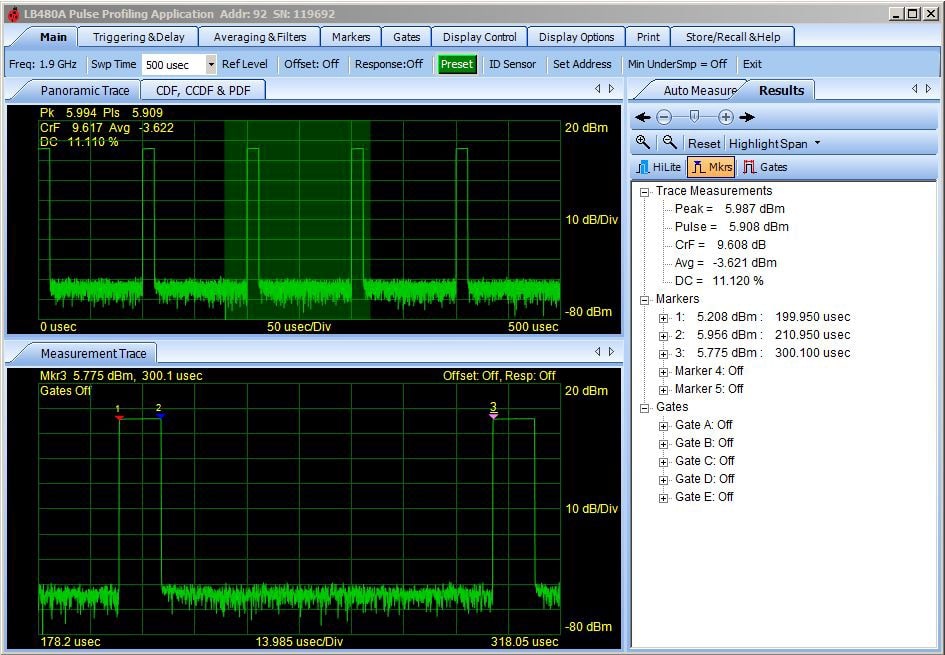Figure 5 – Histograms with Mesial Line
Assuming the power levels have been converted to linear units, the following formula can be utilized to calculate the 50% Reference Power Level.
P50%= Base State + (0.5*(State 2 – State 1))
This Power Level is recognized as the power at the leading and trailing pulse edges. Once this is known, Duty Factor can be calculated. To calculate Duty Factor, we won’t actually use the power level at the 50% Reference because the calculation will be done with bin counts. Since the 50% reference represents the leading and trailing edges of the pulse, all bin counts above the Reference represent time that the Pulse is Active.
Referring to Figures 4 and 5, and the Duty Factor formula above, the total sample count inside the measurement epoch represents the time that that pulses were taken within, and is represented by P. The number of samples taken that lie above the50% Reference represent the Active time and is representative of A. Note that while units of time are referenced with A and P, any such time units cancel out, leaving only the bin count, and the time information is irrelevant to the calculation. The sensor’s sampling rate could be utilized to associate actual time if desired, however it is unnecessary for the calculation of Duty Factor.
For example, if during the measurement window, 1,276,412 samples were taken, and it is determined that 437,567 lie above the 50% Reference, the Duty Factor is:
DF = A/P*100 = 437,567/1,276,412*100 = 34.28%
Actual Measurement
Now let’s see what a real power sensor can give us as a measurement. Using the pulse information and algorithms found in the IEEE specifications, the LB479A sensor makes economically accurate measurements such as those shown below.
Figure 6 shows the pulse measurement using an LB479A power sensor. Note the Pulse Power in the main display and the Peak Power are nearly identical, indicating a pulse with a flat top and little overshoot or tilt (droop). The Duty Cycle is 11.11% and average power is -3.657 dBm. This measurement took very little time to setup and is highly accurate.


